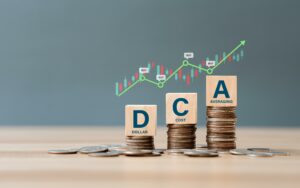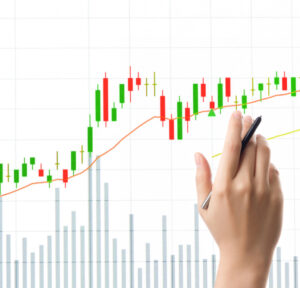Best Practices in Derivative Trading: 7 Tips You Didn’t Know

While you might be familiar with other types of trading, it’s important to note that derivatives have their own particularities. Here are some of the best practices in derivative trading to help you on your way.
What is Derivative Trading?
Derivatives are trading instruments that derive from the value of an underlying investment like commodities, stocks, forex, indices, etc. As a derivative trader, you do not own the underlying investment but do consider its price movement. You can trade instruments based on a variety of investments such as stocks, currencies (forex trading), indices, commodities, and cryptocurrencies.
How to Trade Derivatives?
The first step is to open a derivative trading account with a broker giving you access to a trading platform that offers a wide range of financial instruments. Once your account has been created you can buy (go long) or sell (go short) any instrument that is available for trading.
If you believe the price of an instrument will go up in future, you might place a buy order at the current market price. When the price moves higher, you have the opportunity to close your open position at a profit. The execution is almost instant as the broker settles the transaction in seconds.
Let’s look at a couple of examples that help illustrate the above.
- As the demand for certain products increases, so does the price. This is because companies strive to maximize profits by capitalizing on the seasonal buying spree of consumers. This phenomenon can be observed not just during holidays, but throughout the year, as companies adjust their prices based on changes in customer demand.
- In this next example, you anticipate that the price of oil will go down as geopolitical tensions ease, so you place a sell order at the current market price. When the oil price drops, you have the opportunity to close your open position at a profit. Remember this execution is done by the broker and you do not need to worry about how the transaction is settled.
Margin and Leverage in Derivative Trading
Margin is the amount you deposit into your account for trading. Brokers offer a variety of minimum deposits such as $10 or $100, while some are as high as $10,000. You might think that this makes trading some instruments prohibitive. However, this is where leverage allows you to get a piece of this action.
With leverage, the broker allows you to use borrowed funds while you use your margin as insurance against any future losses that may be incurred. By utilizing leverage, you have the potential to gain profits from minor fluctuations in the value of an instrument, as long as the market moves in your favor.
The Cost of Derivative Trading
Just like in any other business of buying and selling, a derivative trader will incur the cost of doing business. Although the costs might be small, it is important to know how they will affect your ability to be profitable in the long term.
Spread – This is the difference between the current buy price and the selling price. This represents the amount brokers charge to open the position. The more an instrument is traded, the higher liquidity it has, meaning its spreads will be more narrow.
Commission – Unlike many other online trading activities, a derivative trader is usually able to trade with zero (or low) commission.
Inactivity/Dormant Fee – Certain brokers perceive a fee if you do not access your trading account for a predetermined length of time.
Start your trading experience today. Join Klips>>
7 Best Derivative Trading Tips
Now that we’ve defined derivative trading and how to do it, let’s take a look at the best practices.
Find a Regulated Derivative Broker
Choose to open an account with a regulated broker, as regulatory bodies like the FSCA, FCA, CySEC, ASIC and others offer trader protection.
Demo Account
If you’re new to trading then begin your journey in derivative trading with a practice, or demo, account. The demo account will allow you to place orders on multiple instruments in real market conditions without committing your own funds. This allows you to understand how the markets work and become familiar with the trading platform. Any profits or losses are only simulated, and when you feel ready, you can open a live account by depositing your own funds.
How to minimise loses
You can minimize losses by using a stop-loss order where you place a cap on losses if an instrument’s price goes against your expectations. For example, if you opened a trade to buy gold at $1950 anticipating that the price would go higher, and set your stop loss at $1945, the most you could lose on this trade is $5 of your margin. As a CySEC regulated company, we enforce stop-out orders in compliance with the 50% margin close-out rule to ensure our clients’ protection. We understand that market volatility can be unpredictable, and we strive to ensure that our clients’ investments are safeguarded at all times.
Diversify your Financial Portfolio
The derivative trading platform allows you to trade a wide variety of products ranging from stocks, options, cryptocurrencies, currencies, and commodities. You can vary the degrees of risk by balancing more conservative instruments with ones that are experiencing higher market volatility.
Have a Trading Strategy
You will need to learn how to analyse and trade derivatives using various tools available on your platform. Professional traders use both fundamental and technical analysis to understand instrument price movements. Fundamental analysis is the study of how political, social, and economic events affect the intrinsic value, strength, and sentiment of an instrument. Technical analysis refers to the study of the behaviour of prices in a specific timeframe. A hybrid strategy will combine both fundamental and technical perspectives to make an overall judgment on the direction of the instrument.
Create a Trading Plan
Derivative trading requires you to have a trading plan which lays out which instruments you will be trading, the model of your top-down analysis, and how to manage your risk. This plan applies to both professional and novice derivative traders as it is your rulebook for trading. It will guide you on how to manage yourself through both winning streaks and losses while directing you on how you can manage risk exposure on your portfolio of instruments.
Combine your trading plan with a trading journal so you can see how your strategies played out.
Become an educated trader. Join and learn to apply new skills>>
Create a Winning Mindset
Trading is not just about knowing how to predict the markets; it’s also about understanding how to control your emotions. Some of the common traps traders at all levels of experience fall into include:
- FOMO – fear of missing out. Seeing a trend that everyone is on and jumping in without having analysed the markets or checked in with your trading plan.
- Holding onto your losing trade for too long, or even worse, increasing your margin to avoid being stopped out. It’s ok to accept some trading losses, the key is to minimise your losses.
- Letting fear take hold and missing out on potential opportunities. You’ve had a run of bad trades and you’re hesitant to enter the markets again. Taking the time to relook at where you went wrong is a great way to learn further from a first-hand experience. You can always jump back in when you’re ready.
- If you’re new to trading, consider starting off with lower leverage amounts and increasing as you gain confidence.
Best Practices for Better Trading
There are many good practices to follow when trading derivatives and some people have their own advice like ‘the trend is your friend. In this article, we’ve outlined some of the fundamental practices for a rewarding trading experience but as any experienced trader will tell you, there is always more to learn. So, keep learning, trade smart, and enjoy your journey.
————-
Learn the terms
Underlying instrument– The underlying instrument is the financial instrument that a derivative instrument derives its price.
Financial Portfolio – This is a collection of financial instruments that can include shares, real estate, bonds, cash etc. In derivative trading, your portfolio might include a mix of derivative instrument categories like currencies, commodities, indices, and cryptocurrencies.
Market Volatility – This is when markets or specific instruments experience unpredictable and/or sudden sharp price movements.
Disclaimer: Our content is intended to be used for informational purposes only. It is very important to do your own research before making any investment based on your own personal circumstances. You should take independent financial advice from a professional in connection with, or independently research and verify, any information that you find on this article and wish to rely upon, whether for the purpose of making an investment decision or otherwise. Klips does not put available shares or any other underlying asset, but CFD derivatives based in underlying assets.

Level up your performance
This information is written by Klips. The information is provided for general purposes only and does not consider any personal circumstances or objectives. Before acting on this material, you should consider whether it is suitable for your circumstances and, if necessary, seek professional advice. No representation or warranty is given as to the accuracy or completeness of this information. It does not constitute financial, investment or other advice on which you can rely. Any references to past performance, historical returns, future projections, and statistical forecasts are no guarantee of future returns or future performance. Klips will not be held responsible for any use that may be made of this information and for any consequences that may result from such use. Hence, any person relying on the information on this page does it at their own risk.
Learn more, understand the markets
Learn

Top AI Companies to Watch: A Deeper Dive
ByAndreea
 3 min.
3 min.Learn

Charting Your Course to Trading Success with Klips
ByAndreea
 3 min.
3 min.Learn

Navigating the ECB’s Monetary Policy with Klips: Empowering Your Trading Strategy
ByAndreea
 3 min.
3 min.Learn

Harness the Power of Dollar-Cost Averaging on Klips Trading Platform Amidst a Bear Market
ByAndreea
 3 min.
3 min.Learn

Blockchain: The Future of Finance?
ByAndreea
 5 min.
5 min.Learn

AMC stock price – What Influences it the most
ByAdmin
 5 min.
5 min.Learn

What are trading signals?
ByAdmin

Trading

3 popular candlestick patterns for forex trading strategy
ByAdmin
 4 min.
4 min.Trading

Learn how simple forex trading is in South Africa
ByAdmin
 5 min.
5 min.Trading

The Warren Buffet of India: Find Out How Rakesh Jhunjhunwala Built His Fortune
ByAdmin
 7 min.
7 min.



